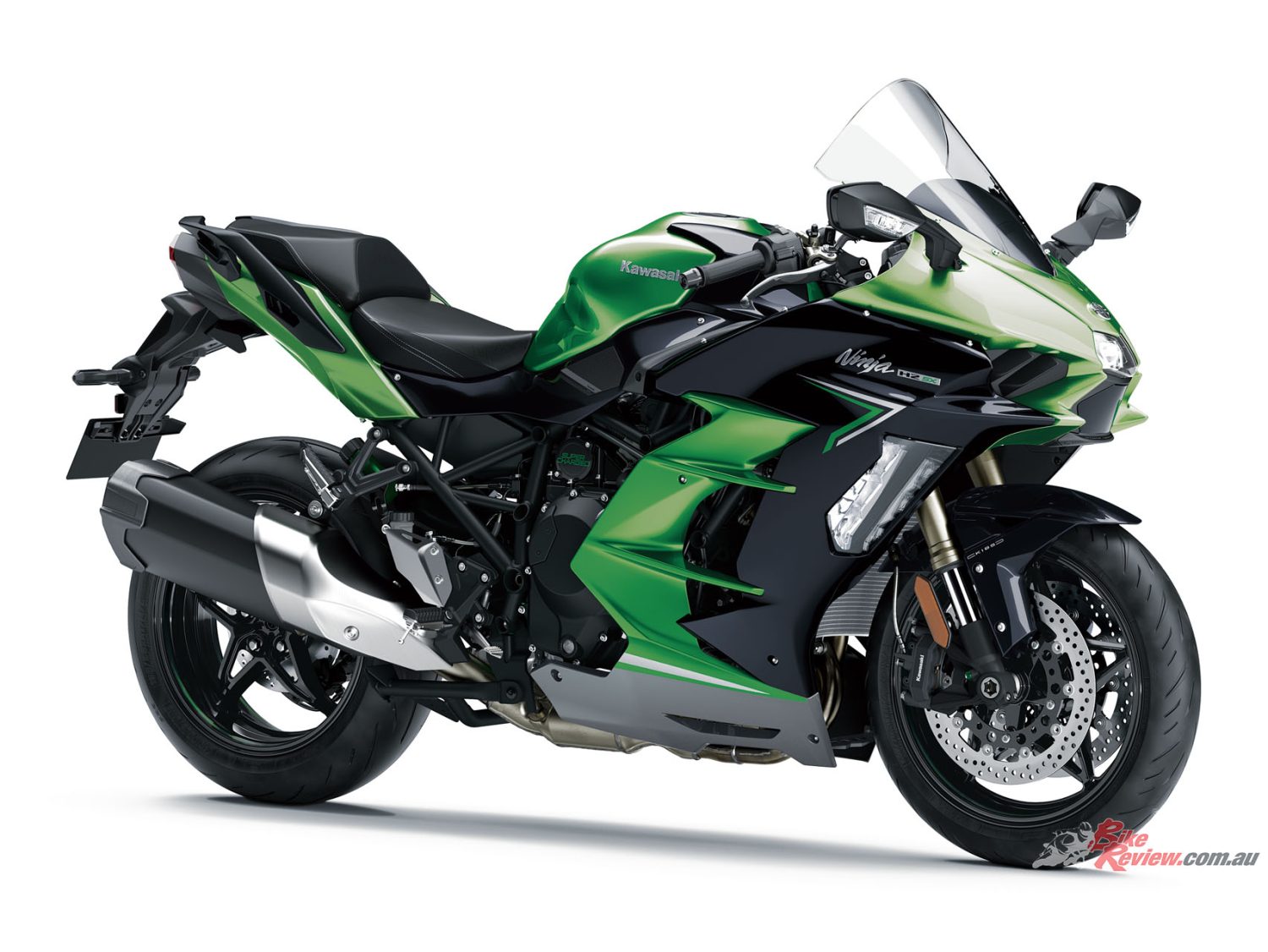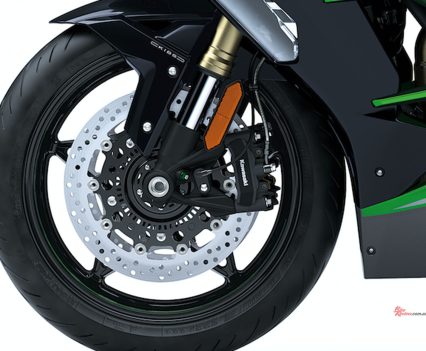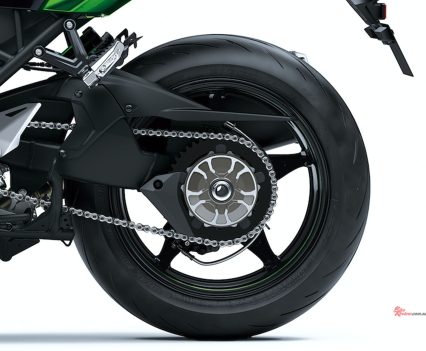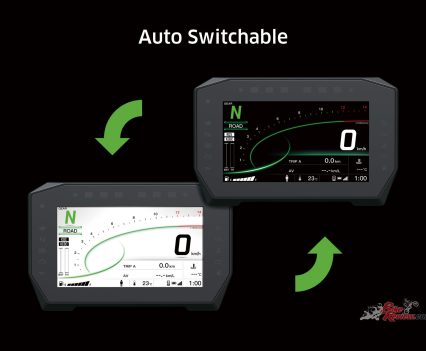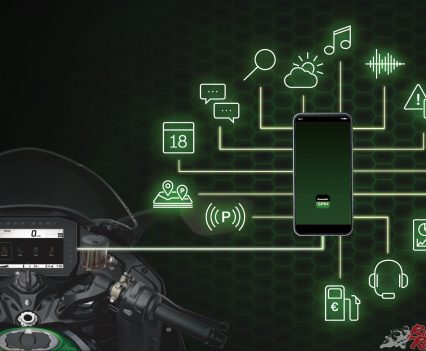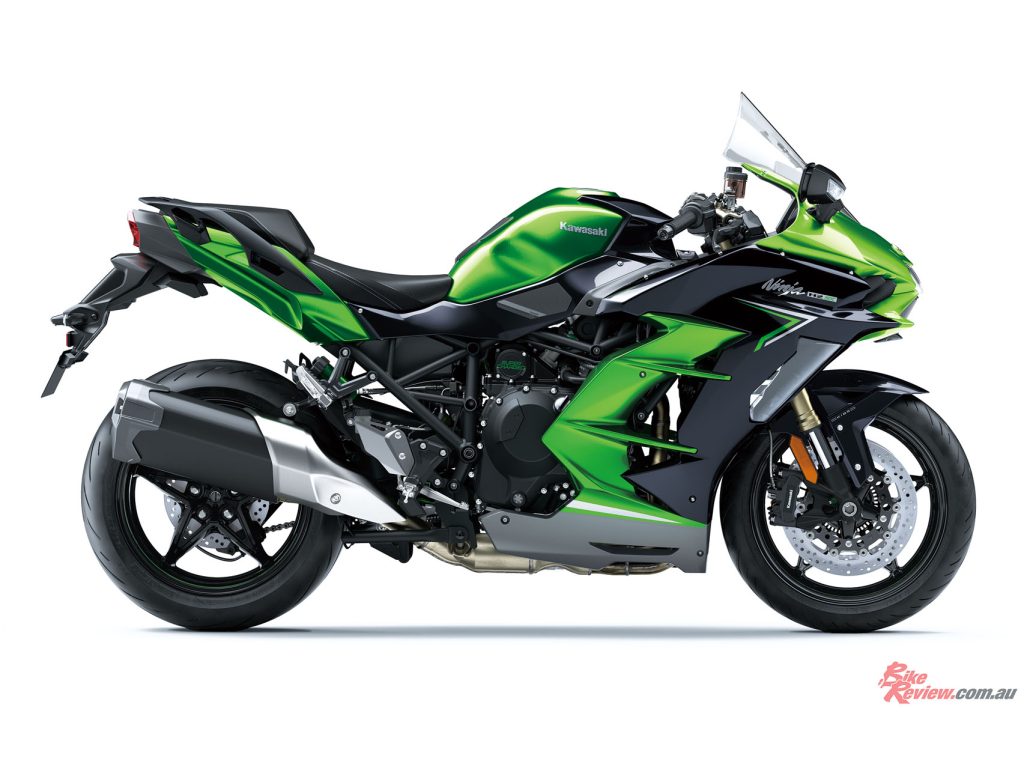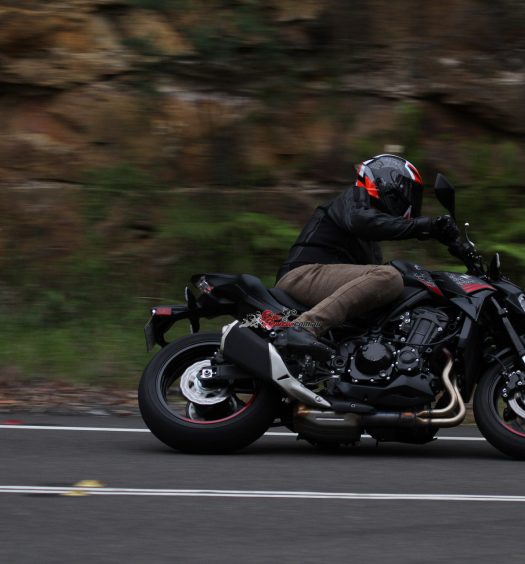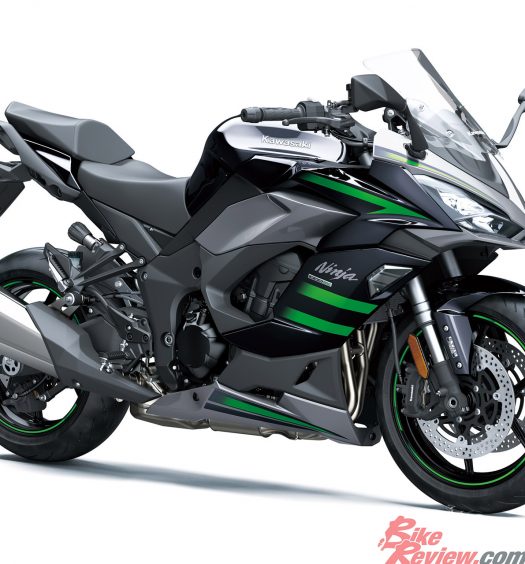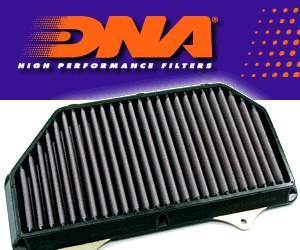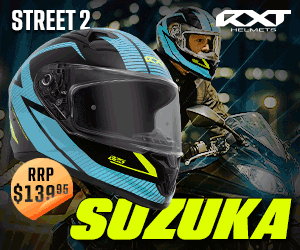Kawasaki have released the first look at their updated H2 SX. The supercharged touring machine has been hugely revised in the electronics area... Press Release: Kawasaki Australia.
Already unique in its ability to provide both supercharged acceleration with the comfort and equipment for long-distance riding, the second-generation Ninja H2 SX benefits from a host of new technology that makes it the most advanced model in Kawasaki’s fleet.
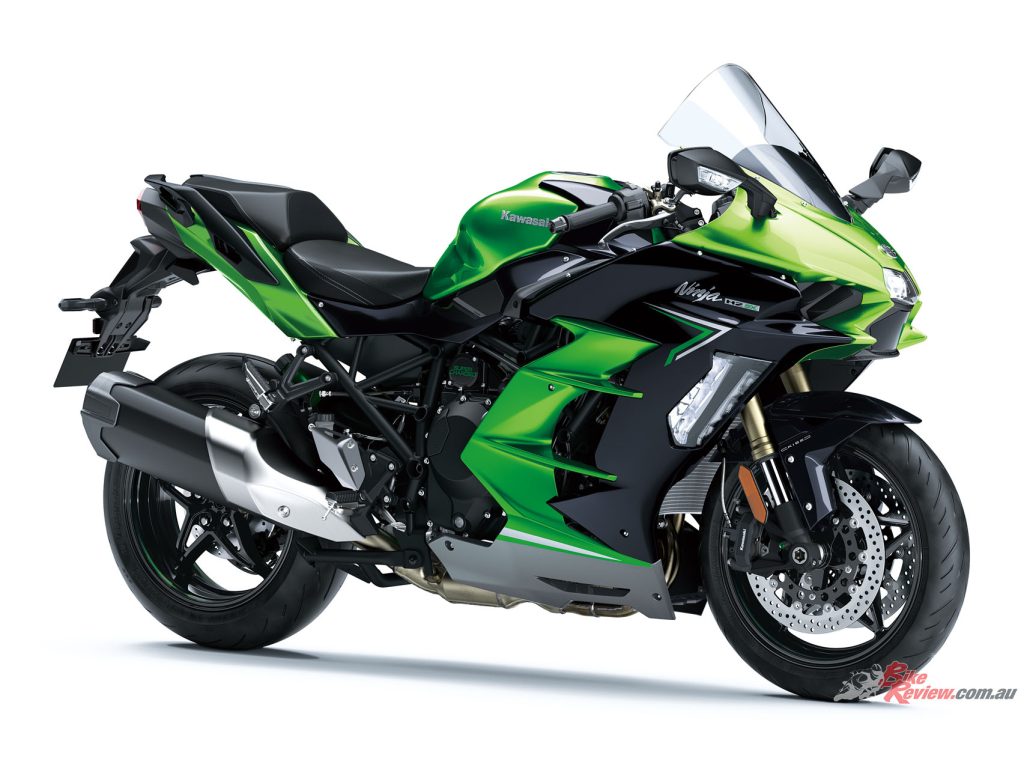
Kawasaki’s flagship model has recently gone through a number of changes to further improve the technology…
Kawasaki’s newest flagship model further distinguishes itself with next-level comfort and convenience features that allow riders to focus on enjoying the ride. The new Ninja H2 SX features a number of technological firsts. Its completely revised core system includes an FI-ECU with torque-demand capabilities, a new IMU that measures in all six DOF; and a compact, boost-circuit-equipped ABS with high computational power – all firsts for Kawasaki. Working in concert, they enable coordinated control of both engine output and brake force.
Check out our review of the last gen H2 SX here…
The new Ninja H2 SX is also the first Japanese mass-production motorcycle and the world’s first sport tourer to be equipped with Bosch’s Advanced Rider Assistance Systems (ARAS). Complemented by the new core system, ARAS uses millimetre – wave radar sensors mounted fore and aft to sense other vehicles in proximity to the Ninja H2 SX and provide three new features: Adaptive Cruise Control (ACC), Blind Spot Detection (BSD), and Forward Collision Warning (FCW). The peace of mind offered by these systems contribute to next-level comfort and enhanced rider confidence. Additional first-time functions include Vehicle Hold Assist (VHA) and Emergency Stop Signal (ESS).

The H2 SX is now equiped with a radar system to ensure fast emergency stops and active cruise control!
The new centrepiece of the cockpit is a large, easy-to-read 6.5in full-colour TFT instrument panel. In addition to smartphone compatibility, riders will be able to use the new infotainment app, Kawasaki SPIN, to install third-party telephone, music, navigation and other applications for use on the instrument panel. Engine fine-tuning offers cleaner emissions and improved fuel economy, and even slightly stronger mid-range torque.
A new upper cowl design elegantly incorporates the ARAS equipment while giving the Ninja H2 SX a fresh look. Improved heat management, revised seat design, and other updates that contribute to increased rider comfort are complemented by new flagship convenience features like KIPASS and TPMS – all increasing the bike’s touring capability. Now, more than ever, the Ninja H2 SX is ready to supercharge your journey.
The new Ninja H2 SX is the first Japanese mass-production motorcycle and the world’s first sport tourer to be equipped with Bosch’s Advanced Rider Assistance Systems (ARAS)…
While the base design started with the supercharged engine of the Ninja H2, the numerous changes necessary to achieve the balance of power and fuel efficiency desired for the Ninja H2 SX essentially resulted in a completely distinct engine. The Balanced Supercharged Engine delivers both exhilarating acceleration and high fuel efficiency.
Key to achieving this was increasing the engine’s thermal efficiency, which was accomplished with a compression ratio significantly higher than that of the Ninja H2. Other changes – to the supercharger, combustion chamber, cams, and intake and exhaust systems – completed the design.
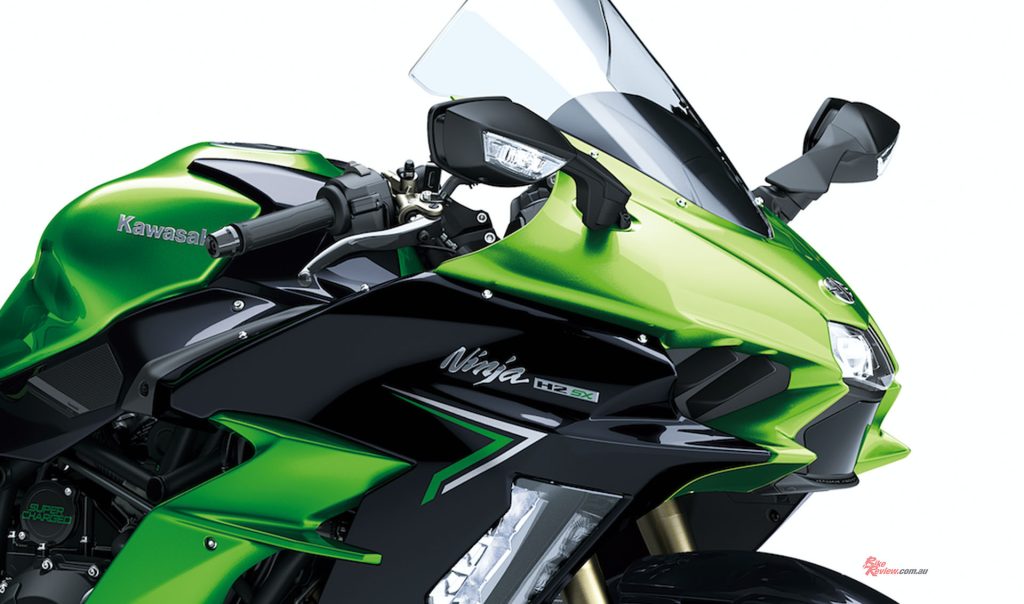
“Air supplied to the supercharger enters via a single Ram Air intake in the left side of the upper cowl.”
Air supplied to the supercharger enters via a single Ram Air intake in the left side of the upper cowl. The total frontal area is approximately 80 per cent that of the Ninja H2, matching the airflow requirements of the Balanced Supercharged Engine. Ram Air duct was designed to take the fresh air to the supercharger in as straight a line as possible, contributing to the increased supercharger efficiency. Like on the Ninja H2, a sound hole in the intake duct makes it easier to hear the supercharger’s characteristic chirping.
ARAS uses millimetre – wave radar sensors mounted fore and aft to sense other vehicles in proximity to the Ninja H2 SX and provide three new features: Adaptive Cruise Control (ACC), Blind Spot Detection (BSD), and Forward Collision Warning (FCW)…
The supercharger is driven by a planetary gear train, which runs off the crankshaft. Designing the gear train using technology from Kawasaki’s Aerospace Company resulted in a very compact unit, with minimal power loss. Gear train increases the impeller speed to 9.2x the crank speed (1.15x step gear x 8x planetary gear). Aluminium intake chamber is ideally shaped for high efficiency and high engine output. Optimised volume and chamber construction contributes to an overall supercharger efficiency greater than that of the Ninja H2.
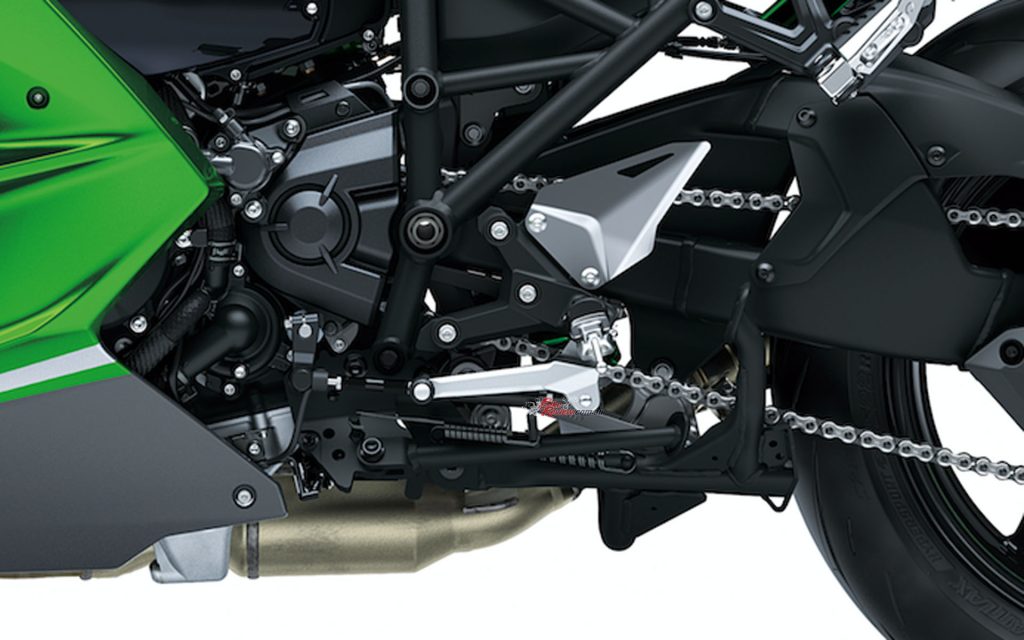
The powerplant of the H2 SX is a revised version from the standard H2 with changes made to make rideability a breeze.
Like the Ninja H2, a dummy head is used during the cylinder honing process. The more precise circularity and cylindricity that result allow the use of low-tension piston rings, which helps reduce mechanical loss. Ninja H2 SX’s significantly higher compression ratio (11.2:1 vs 8.5:1 on the Ninja H2) enables increased thermal efficiency and greatly contributes to fuel efficiency.
Larger silencer volume (7L >> 8.8L) offsets the elimination of the 4L pre-silencer chamber, helping to ensure that Euro5 exhaust noise regulations are met, while contributing to weight savings. Greater-volume main catalyser (in the collector pipe) and the addition of a sub-catalyser (in the silencer), help the Ninja H2 SX meet Euro5 emissions standards. The addition of a second O2 sensor further contributes to clean emissions: sensors upstream and downstream of the catalysers monitor the exhaust gas and enable more precise FI management, which in turn benefits emissions.
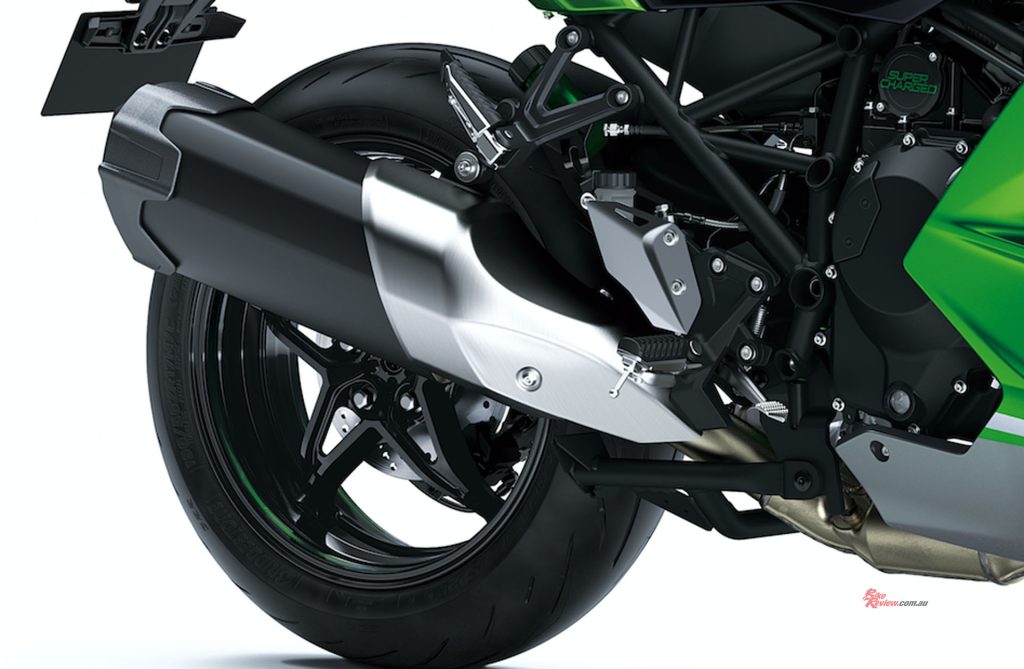
“Larger silencer volume (7L >> 8.8L) offsets the elimination of the 4L pre-silencer chamber, helping to ensure that Euro5 exhaust noise regulations are met, while contributing to weight savings.”
Like the Ninja H2, the Ninja H2 SX features a dog-ring type transmission. The kind of transmission commonly found in MotoGP or Formula 1, it facilitates smooth, quick shifting. Gear ratios were optimised for a sport tourer. Unlike a standard motorcycle transmission in which shift forks slide the gears into position, with a dog-ring transmission the gears all stay in place. Only the dog rings move, sliding into position to engage the desired gear. Input gears are fixed onto the input shaft, whereas the output gears spin freely on needle bearings. Once engaged, the output gear (previously spinning freely) is then able to transfer power to the output shaft.
A long primary gear contributes to the Balanced Supercharged Engine’s fuel efficiency while helping to reduce the load of its great torque on the transmission gears. 1st and 2nd gears are also long, contributing to easier engine manageability in everyday riding situations. Re-evaluating the number of gear teeth to minimise resonance when the gears mesh, and adding ribs to the inside of the clutch cover increases its stiffness, further helping to reduce mechanical noise. Optimised volume of hydraulic fluid routed to the clutch plates offers improved clutch release. As a result, the shift load due to the plates dragging can be minimised, an improvement that is especially noticeable when stopped, when it is easier to shift into neutral.
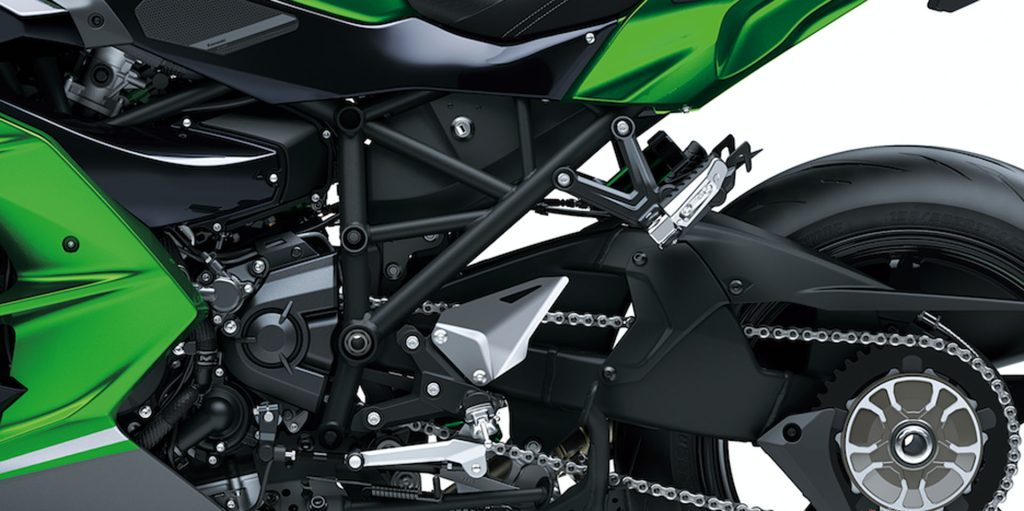
“The Ninja H2 SX features an innovative trellis frame like the Ninja H2, but the frame was designed to be able to accommodate a passenger and luggage.”
The Ninja H2 SX features an innovative trellis frame like the Ninja H2, but the frame was designed to be able to accommodate a passenger and luggage. Its 195kg payload is comparable to that of the Ninja 1000SX. Higher rigidity and a longer wheelbase than those of the Ninja H2 contributes to the composure necessary for riding at highway speed with panniers, while a 30° steering angle facilitates low-speed manoeuvres.
A 43mm inverted fork is fully adjustable for compression and rebound damping and preload. Settings chosen for the Ninja H2 SX ensure a balance of ride comfort and sport performance. Fully adjustable mono-shock rear suspension contributes to stability. The rear shock is gas-charged with a piggy-back reservoir, ensuring stable damping performance. Rear shock can be adjusted for compression damping (high/low-speed), rebound damping and preload. Shock settings also contribute to the balance of ride comfort and sport performance.
320mm brake discs, radial-mount front calipers and a new Brembo radial-pump brake master-cylinder offer impressive braking performance and superb feel. ABS is a standard feature on the Ninja H2 SX. Thanks to the precise operation of the new Bosch 10.3ME ABS unit, braking is very smooth, contributing to rider confidence.
The riding position for the Ninja H2 SX was designed with both sport riding and comfort in mind. Not as far forward- leaning as the Ninja ZX- 14R, and not as upright as the Ninja 1000SX, the Ninja H2 SX’s riding position offers a more relaxed bend for both the elbows and knees than the Ninja ZX-14R. The position is comfortable for both in-town riding and long touring, while still enabling the rider to enjoy sporty riding.
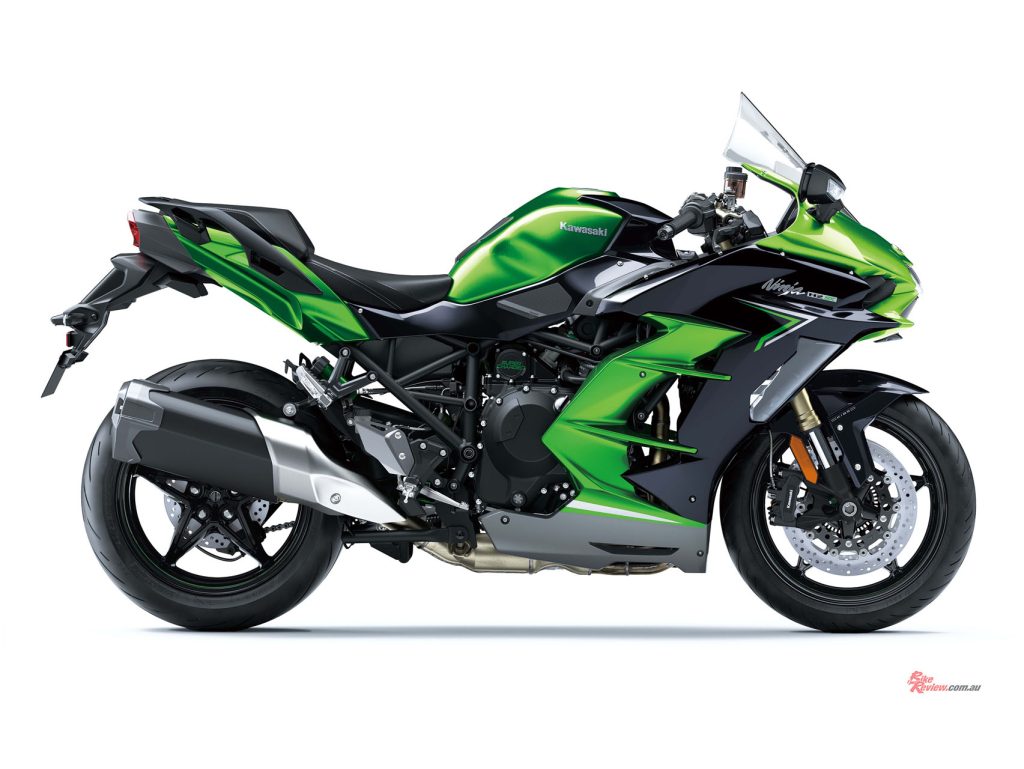
While the H2 SX has the performance of a supercharger, the riding position has been kept in mind to make long trips more comfortable for riders.
Simple surfaces make the restyled upper cowl look even more bewitching, while maintaining its aggressive design. Sharp, angular lines contribute to a slim, compact impression, and even with the addition of the radar sensor, the upper cowl is no larger than before. The front radar sensor is positioned below the headlight. Designers took great care to integrate it into the design of the upper cowl. The radar sensor sits behind a cover, specially designed (thickness and material were carefully selected) to not interfere with the radar function – a first in the motorcycle industry.
LED headlight is positioned at the front of the upper cowl, contributing to the cowl’s intense design. More compact (now 40 mm) to allow room for the front radar sensor, it features integrated position lamps that are crystal-like in appearance, adding a high-class touch. Aerodynamically shaped mirrors offer a clear view of the rear even when the accessory panniers are fitted. New-design single-bulb LED- type turn signals are built into the mirror housings. A rear-facing radar sensor is built into the rear fender. Like the front radar sensor, it is cleverly hidden behind a cover.
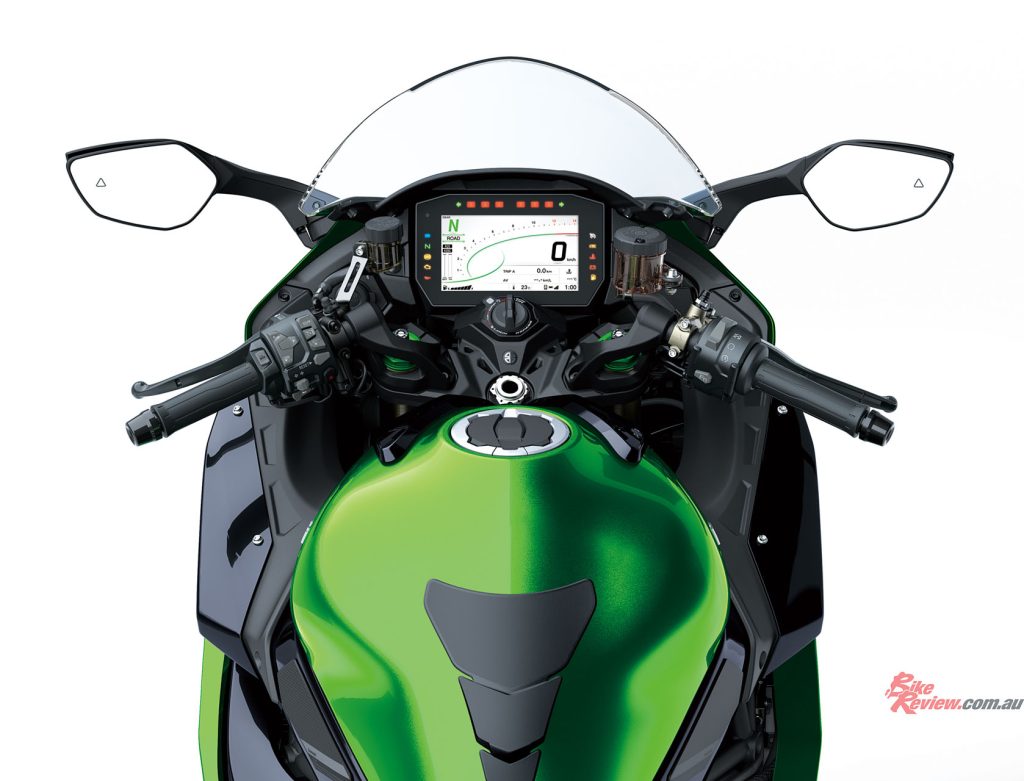
“High-grade full colour display features TFT (thin-film transistor) technology, delivering a high level of visibility.”
High-grade full colour display features TFT (thin-film transistor) technology, delivering a high level of visibility. The screen’s background colour is selectable (black, white or automatic switching), and screen brightness adjusts automatically to suit available light. In addition to a large digital speedometer, display functions in the middle area include: cornering light indicator, service indicator, VHA indicator, and Economical Riding Indicator.
Display functions in the upper area include: integrated riding mode, gear position indicator, distance setting indicator, ACC indicator, tachometer, KQS indicator, Kawasaki Engine Brake Control indicator, and a multifunction gauge that visually shows the boost pressure plus the rider’s choice of throttle application, front brake pressure or G-force (acceleration/deceleration). In addition to the standard display mode, riders can switch to Kawasaki SPIN mode to view various apps on the instrument panel. In Settings mode, riders can set various vehicle settings preferences.
Kawasaki’s new smartphone-based infotainment app enables various third- party applications to be downloaded and mirrored on the cockpit’s TFT display. Basic functions available in the app include telephone, map display, music, calendar, and contacts. Additionally, riders can opt to download third-party apps to add to their Kawasaki SPIN library to be able to interact with them on the TFT display. Some available third-party apps.
KIPASS (Kawasaki’s Intelligent Proximity Activation Start System) is a master key system that allows remote activation of the bike’s main switch and steering lock. The system offers increased convenience while acting as a deterrent to theft and vandalism. With the compact key fob (portable immobiliser) in a pocket, KIPASS allows riders to remotely release the bike’s steering lock and main switch simply by approaching the bike.
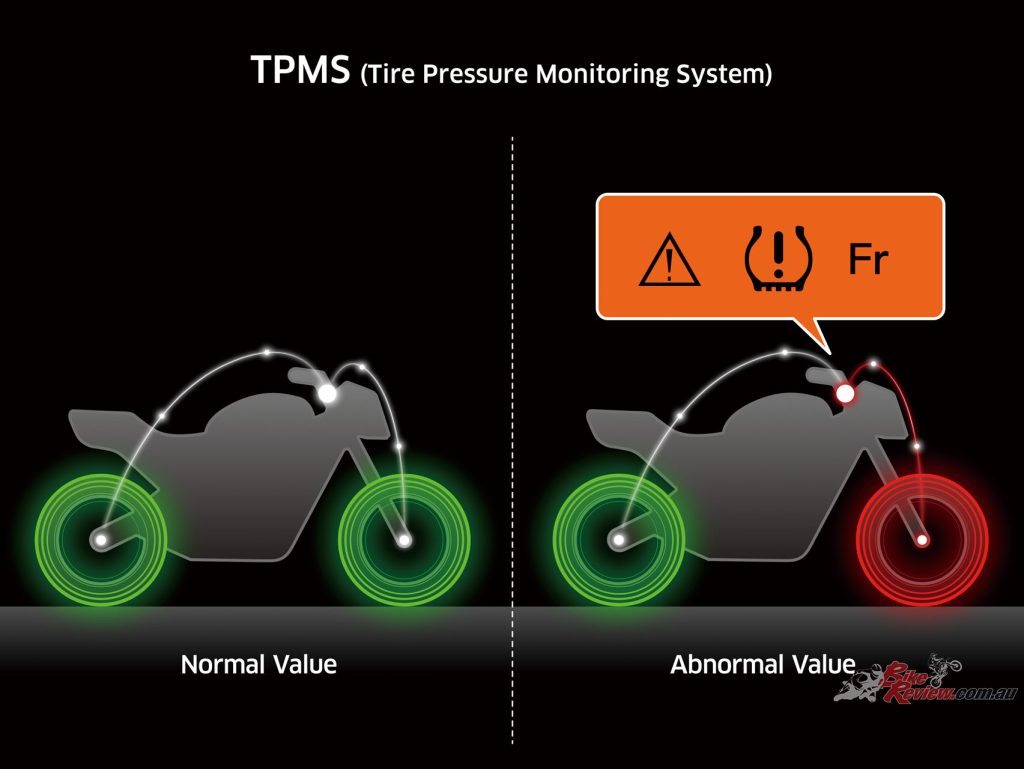
“TPMS continuously monitors tyre air pressure while riding, adding to rider reassurance on long tours.”
TPMS continuously monitors tyre air pressure while riding, adding to rider reassurance on long tours. To alert riders to any tyre pressure irregularities, tyre pressure sensors are fitted as standard equipment. The system allows the rider to monitor tyre pressure while underway. When tyre pressure falls below 220kPa, a low-pressure warning is displayed. The ability to take into account temperature changes and display values recalculated for 20°C helps prevent false warnings when air expands as the tyres warm up.
The Ninja H2 SX is Kawasaki’s first model to integrate an FI-ECU with torque-demand capabilities; new IMU that measures in six DOF; and a compact, boost-circuit-equipped ABS with high computational power. Working in concert, they enable coordinated control of both engine output and brake force. With more sophisticated torque-demand capabilities, the new FI-ECU is able to adjust torque in response to external direction, which enables it to work in concert with the ABS. This coordinated control of both the engine and brakes is essential for delivering smooth operation in systems like Adaptive Cruise Control.
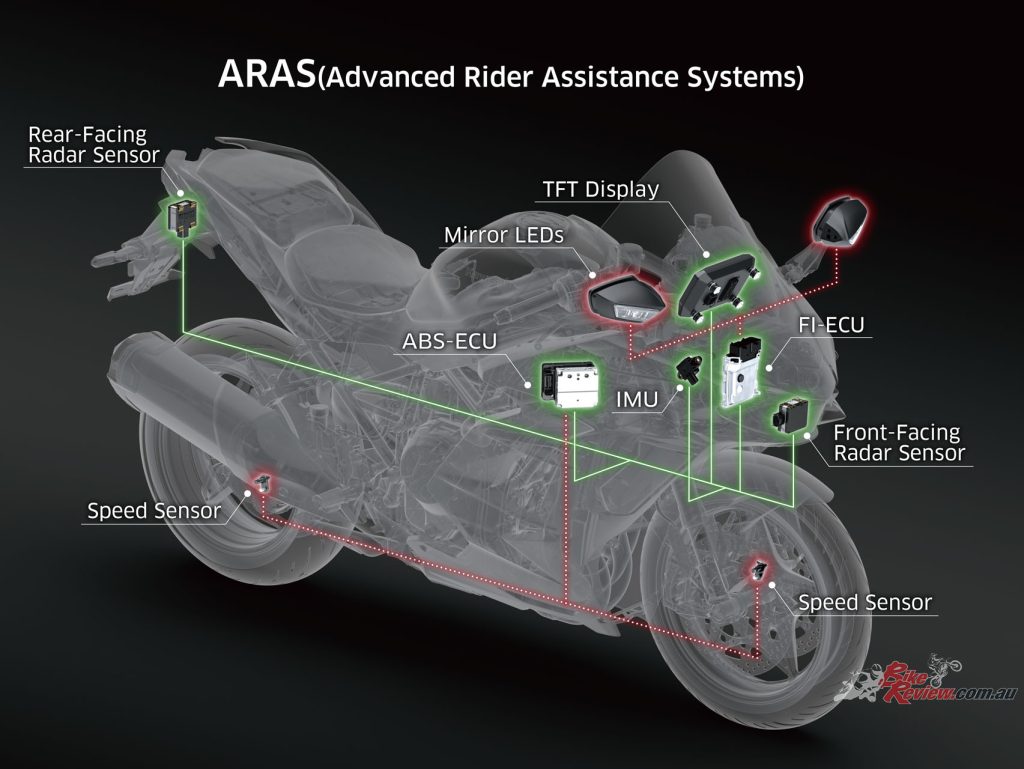
“The Ninja H2 SX is Kawasaki’s first model to integrate an FI-ECU with torque-demand capabilities; new IMU that measures in six DOF; and a compact, boost-circuit-equipped ABS with high computational power.”
IMU (Inertial Measurement Unit) enables inertia along 6 DOF (degrees of freedom) to be monitored. With the new unit, acceleration along longitudinal, transverse and vertical axes, plus roll rate, pitch rate and yaw rate are all measured (previously, yaw rate was calculated). Feedback from the IMU is used to give a clearer real-time.
A more advanced version of Electronic Cruise Control, ACC maintains the speed set by the rider, but adjusts the vehicle speed to maintain a suitable following distance from the vehicle in front. Front-facing radar sensor uses millimetre-wave radar to scan ahead in the rider’s lane. (The radar scans in a narrow path to focus on targets in the same lane.) The ABS-ECU obtains information from the radar, IMU, FI-ECU (front/rear wheel speed), as well as the instrument panel (rider-selected distance setting). When the distance to the vehicle in front is deemed insufficient, the ABS-ECU directs torque to be reduced.
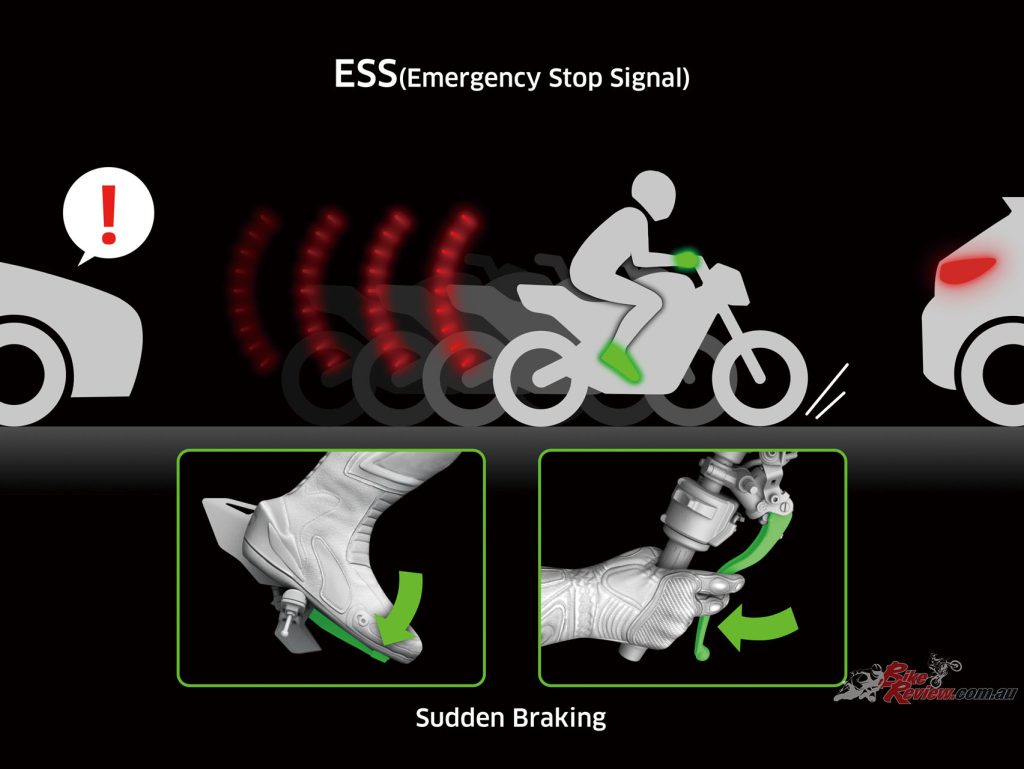
Emergency Stop Signal identifies sharp braking and will flash the tail light to gain the attention of drivers behind.
When the system determines that continuing at the current speed may result in a collision with the vehicle in front, it warns the rider. Front-facing radar sensor monitors the distance and speed of the vehicle in front. When a vehicle is in close proximity and there is danger of a collision should the current speed be maintained, the system alerts the rider using a bright flashing red LED light above the instrument panel. A warning is also shown on the TFT display.
The rear-facing radar sensor monitors the bike’s surroundings and alerts the rider to presence of a vehicle approaching in the rider’s blind spot. Rear-facing radar sensor scans behind in the lanes to the left and right of the rider. When an approaching vehicle is detected, an LED built into
the rearview mirror will light up. (While common in the automotive world, this is the first use of mirror LEDs in the motorcycle industry). Should the rider indicate the intent to change lanes by switching on their turn signal while a vehicle is detected in a blind spot, the mirror LED will flash.
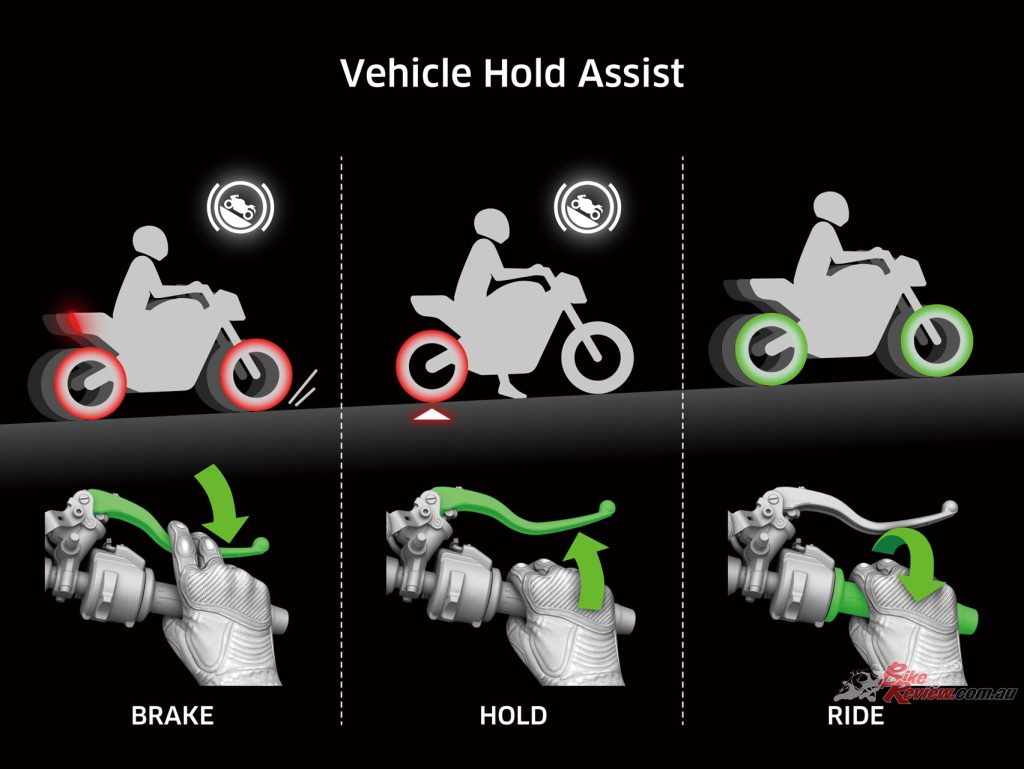
“Activated when the rider has stopped and firmly applies the brake(s), VHA (Vehicle Hold Assist) engages the rear brake to allow the rider to relax their brake hand.”
Activated when the rider has stopped and firmly applies the brake, VHA (Vehicle Hold Assist) engages the rear brake to allow the rider to relax their brake hand. In addition to brake fluid pressure, the ABS-ECU examines information from the IMU (degree of road slope) and FI-ECU (front/rear wheel speed, throttle position, and side stand switch) to determine whether operation conditions have been met.
When the rider has stopped, VHA is initiated after the rider exerts a given amount of pressure (to either the front and/or rear brake). The ABS pump exerts pressure to engage the rear brake, and a light/signal is indicated on the instrument panel to let the rider know that they can relax their brake hand and the bike will remain in place. The system disengages automatically when the rider turns the throttle to accelerate, when the side stand goes down, or 10 minutes after activation. The rider can also disengage the system by quickly squeezing and releasing the brake lever (within 1 second).
The other systems which were standard on previous year model H2 SX’s are also on the 2022 model. Including: Emergency Stop Signal, KCMF (Kawasaki Cornering Management Function), KTRC (Kawasaki Traction Control), KLCM (Kawasaki Launch Control Mode), KIBS (Kawasaki Intelligent anti-lock Brake System), Kawasaki Engine Brake Control, Power Modes: Full, Middle and Low and Integrated Riding Modes: Sport, Road, Rain, Rider (manual).
Pricing and release date are TBA, keep an eye out for those…


